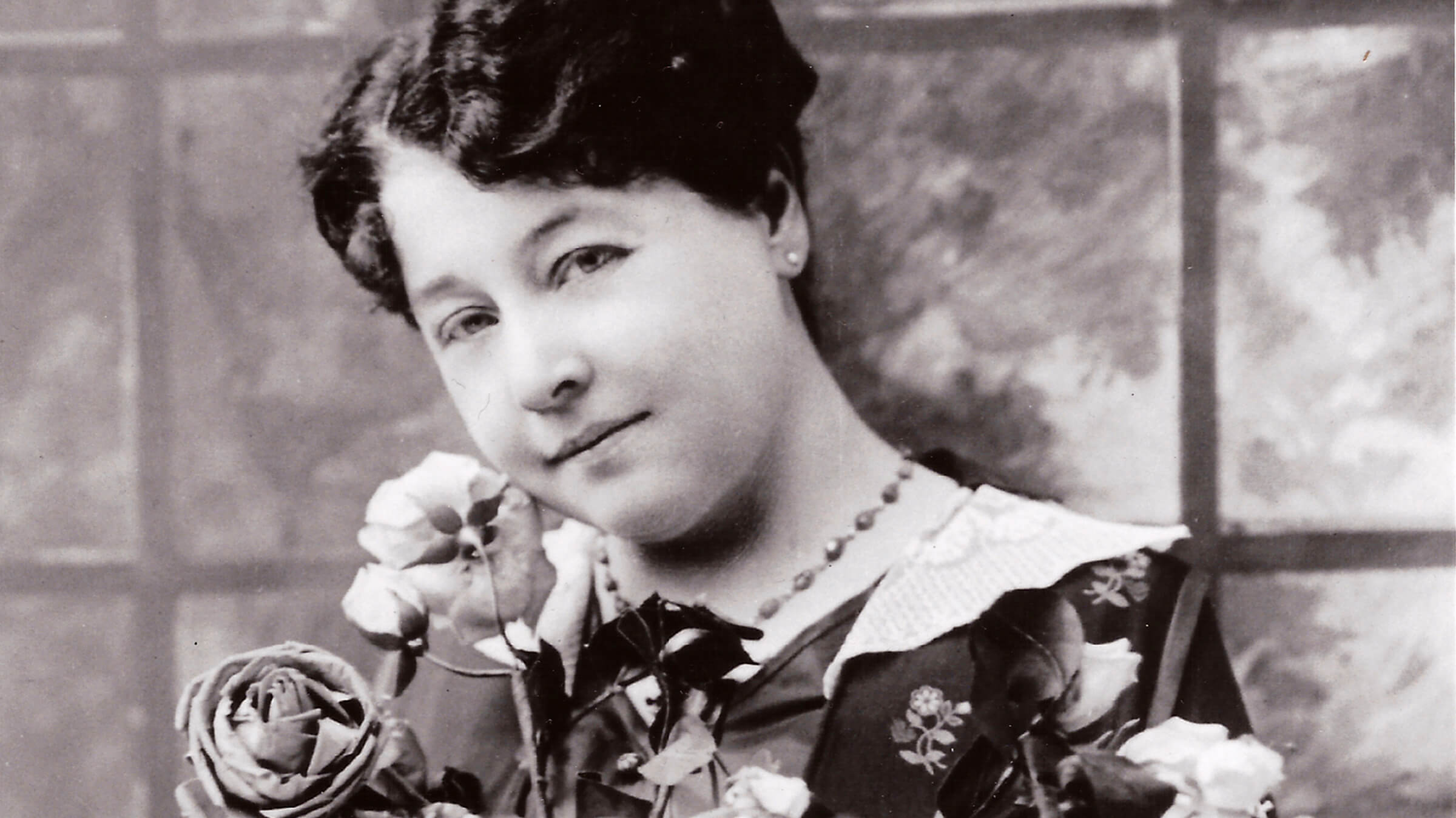THE DETECTIVE AND HIS DOG (1912)
MATRIMONY’S SPEED LIMIT (1913)
FALLING LEAVES (1912)
THE PIT AND THE PENDULUM (1913)
In 1894 a young secretary entered the Comptoir Général de Photographie in Paris with a glowing reference for her skills in shorthand and the latest clerical gadget, the typewriter. Hired on the spot, Alice Guy later witnessed both Georges Demenÿ and Louis Lumière demonstrate the first moving picture cameras in these same offices of the city’s leading photographic supplier. At her own suggestion, Guy soon began producing films to demonstrate the cameras’ potential to customers. Boss Léon Gaumont’s only condition was that she not forsake her secretarial responsibilities, which had quickly expanded into the role of office manager.
In contrast to most contemporary filmmakers who were shooting actualities, or documentary scenes, Guy wrote short fictional scenarios and filmed them with friends. Le Fée aux choux (The Cabbage Fairy), an elaborate fable complete with hand-colored frames, played at the 1896 International Exhibition in Paris. While keeping up her administrative duties, Guy went on to produce actualités, fiction films, and more than 100 phonoscènes (sound films) using the Gaumont-patented chronophone. She wrote the stories and directed most of them, as well as supervised the studio facility Gaumont had built in Belleville. By the end of 1906, the film division of Gaumont represented nearly 90 percent of the firm’s total profits. Louis Feuillaud and Victorin Jasset were Guy’s assistants. She mingled with the likes of Gustave Eiffel, Louis Renault, and Alberto Santos-Dumont, the Brazilian aviator. At 33 years old, Guy was fully in charge of production, answering to the board of directors.
But France was not to be her home for much longer. On the job, Guy had met the Gaumont representative from England, Herbert Blaché, nine years her junior. The two fell in love and soon Guy was on her way to America where her new husband was in charge of promoting the Gaumont chronophone out of Cleveland, Ohio. Leaving behind an exciting and successful career, Guy described the gloomy arrival in New York: “The view of Liberty lighting the world, the sight of the skyscrapers in the fog could not chase my sadness. I saw all that through tears which I tried in vain to stop. All around me I heard exclamations of enthusiasm in a language of which I understood not one word.”
After three years as a housewife and new mother, Guy remade herself into an American director. First using the Gaumont facility in Flushing, New York, Guy later started a new studio with her own money, eventually building a large production facility in Fort Lee, at the time the center of film production in the U.S. Through Solax, which operated from October 1910 to June 1914, she oversaw the production of 325 films, directing an estimated 35 to 50 of them herself. She built a $100,000 state-of-the-art studio replete with carpentry shops, prop rooms, dressing rooms, five stage sets, labs, dark rooms, and projection rooms. The studio’s grounds were sculpted to accommodate an abundance of landscapes, which Guy patrolled on horseback. The studio’s output ranged widely, from westerns to social-issue dramas. While Guy edited all scripts herself, she primarily directed comedies, romantic comedies, and costume dramas adapted from fairy tales and literature.
By 1912, the film industry was undergoing a makeover of its own. Technology was changing fast and required fresh capital investment to keep up to date. Higher production values and films running at least five reels were in demand to fill the new movie palaces catering to the middle classes. The center of the movie production itself moved to California for the year-round good weather and to escape the Edison Trust monopoly on distribution. The outbreak of World War I in 1914 also took its toll, and coal shortages hindered production on the frostbitten East Coast. French-run companies like Gaumont retreated from the U.S.
Once the center of creative output at Solax, Guy now found herself as a director-for-hire, who received pre-determined scripts, casts, crews, and budgets. She directed The Lure (1914), a white slavery morality tale of the type popular at the time, for the Schubert Film Company. The original agreement was to split the profits evenly, but her husband renegotiated for a flat fee of $10,000. The feature went on to make $300,000. It was one of many blows to come. Her last film was Tarnished Reputations (1920) for Perret Pictures, run by a former Gaumont stock player.
In 1922, when silent film was achieving its apex, Guy returned to France, unable to sustain herself in the revamped industry. She had suffered through the loss of Solax Studios to creditors and an unpleasant divorce after her husband ran off to California with an actress. She had also raised two children, faced the kidnapping of one of them on a trip to Chicago, fled to Canada during a polio epidemic and to North Carolina during the war. She survived a severe bout of the 1918 Spanish flu, which killed four of her Solax employees.
Still fighting for her place in the film industry, Guy traveled back to the U.S. in 1927 in a futile search of her Solax films, prints of which she had deposited with the Copyright Office. She returned to France empty handed and almost slipped into history unnoticed. Through her own efforts—lecturing at universities and politely correcting historians’ mistakes—along with the efforts of diligent archivists, she has been rescued from unwarranted obscurity. Ninety-nine years after the opening of Solax, Alice Guy remains the only woman to have ever owned a movie studio.

